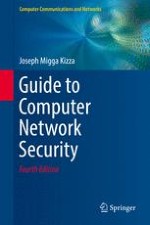2017 | OriginalPaper | Buchkapitel
24. Internet of Things (IoT): Growth, Challenges, and Security
verfasst von : Joseph Migga Kizza
Erschienen in: Guide to Computer Network Security
Aktivieren Sie unsere intelligente Suche, um passende Fachinhalte oder Patente zu finden.
Wählen Sie Textabschnitte aus um mit Künstlicher Intelligenz passenden Patente zu finden. powered by
Markieren Sie Textabschnitte, um KI-gestützt weitere passende Inhalte zu finden. powered by
